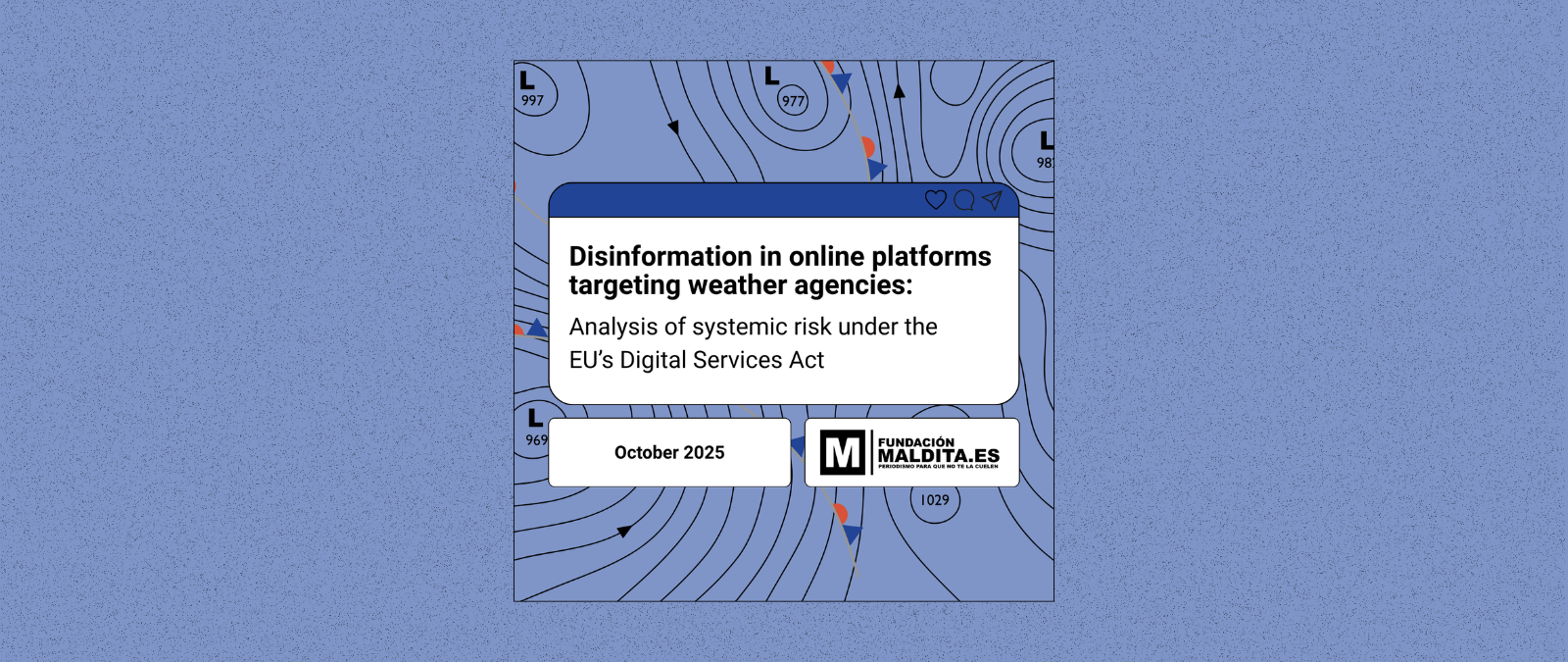On October 23, 2024, the Spanish State Meteorological Agency AEMET issued the first alerts about the “formation of a DANA,” which days later caused severe flooding and claimed over 200 lives in southern and eastern Spain, particularly in Valencia. Alongside the meteorological emergency, a misinformation crisis also emerged, directly affecting AEMET and its work.
A year later, Fundación Maldita.es publishes a report analyzing the risks posed by disinformation targeting meteorological agencies that might undermine public confidence of its alerts during natural catastrophes. It also evaluates the current measures of Facebook, Instagram, YouTube, TikTok, and X to mitigate it, in accordance with their obligations under the Digital Services Act (DSA), using a sample of misleading content and reviewing their internal policies.
Key findings include:
Only 8% of posts containing misinformation targeting AEMET and debunked by Maldita.es included any contextual information added by the platform in the form of labels or other interventions, although this percentage varies by service.
Internal policies of these platforms differ in how precisely they address misinformation targeting meteorological agencies; X does not even include specifications regarding misinformation in general.
The crucial role AEMET and other meteorological agencies play in the current climate emergency, the harmful narratives spread through misinformation, and its reach on platforms highlight the severity of the risk that must be considered.
This risk should be classified as systemic under the Digital Services Act, given its negative impact on public safety, civic discourse, democratic processes, and public health. Fundación Maldita.es proposes a framework for platforms to address this risk.
Platforms must strengthen and coordinate their measures to mitigate the spread of misinformation affecting the credibility of meteorological agencies like AEMET, prioritizing verified information and collaboration with scientific institutions during natural disasters and addressing misinformation through a strategy of adding contextual information rather than removing content.
The full report is available at this link.
